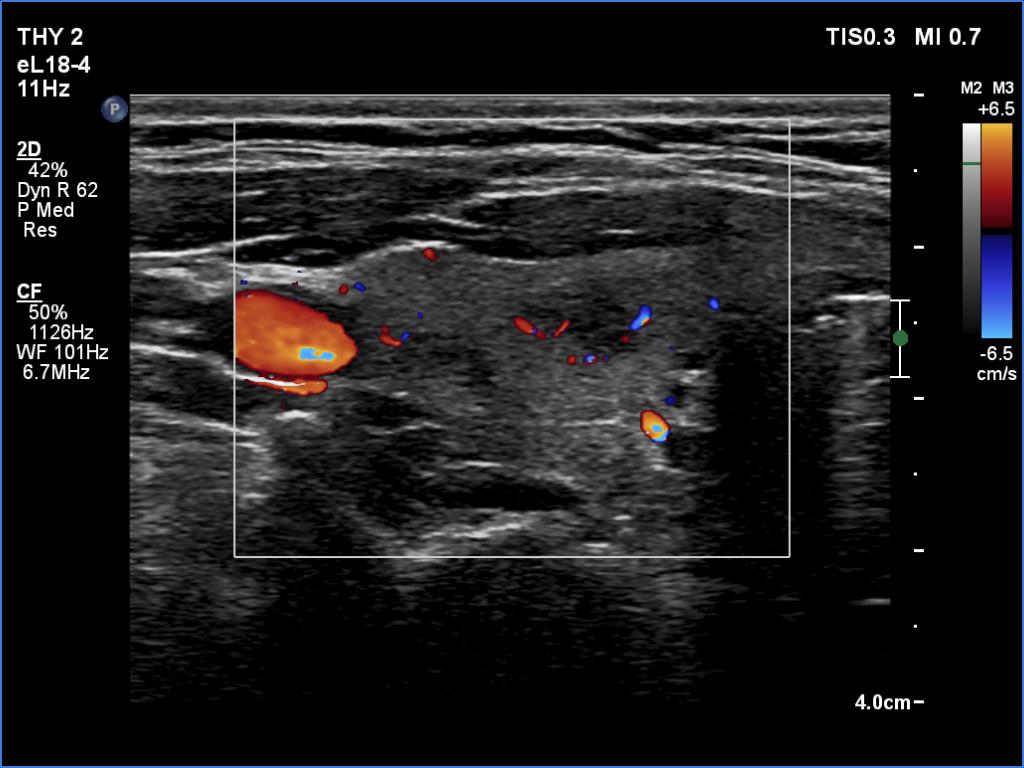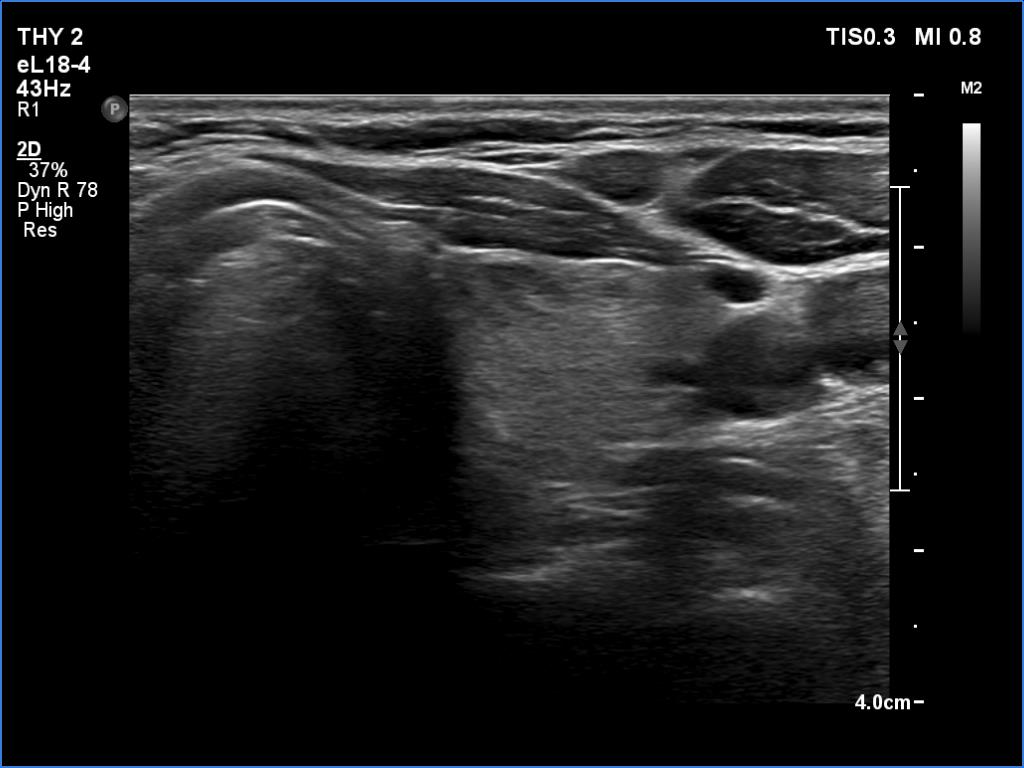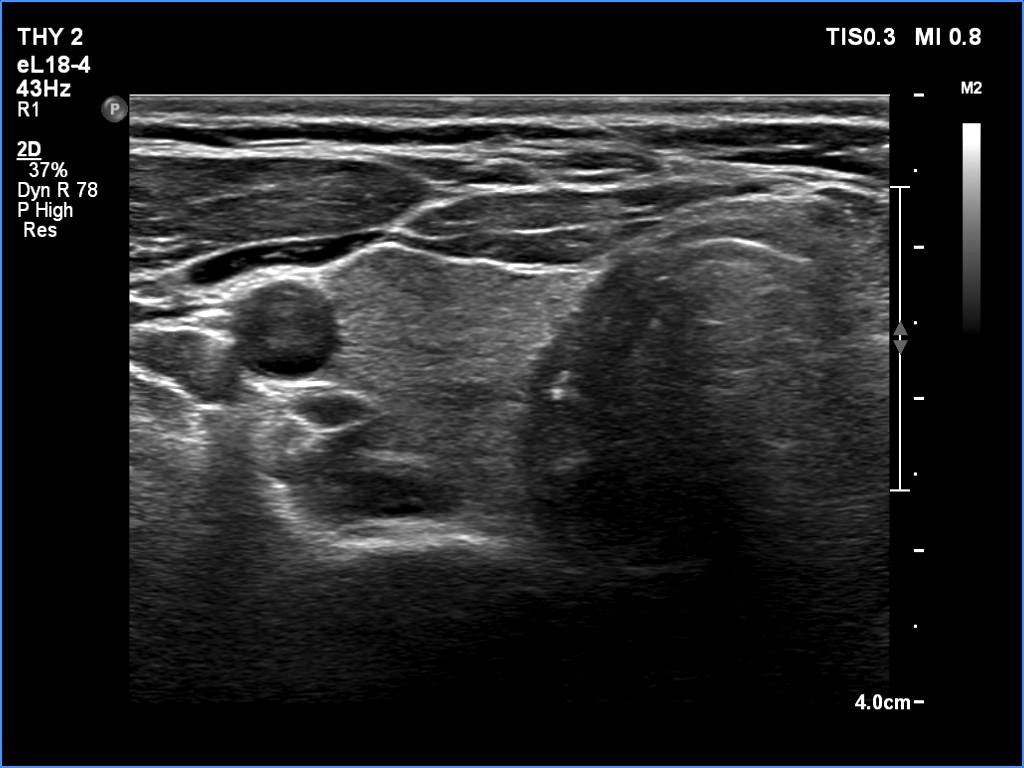Subacute granulomatous thyroiditis - case 567 |
|
First examination (first row of images)
Clinical presentation: A 41-year-old woman was referred for evaluation of a hyperthyroidism. She was treated for Graves' disease 12 years ago. Recently, she noticed fatigue, palpitations and subfebrility. Asked if there was neck tenderness or pain, she answered no.
Palpation: The right lobe was tender on palpation.
Laboratory examination: TSH 0.01 mIU/L, FT4 27.4 pM/L, CRP 6.3 mg/L.
Ultrasonography: The thyroid was echonormal and had several discrete, hypoechoic lesions. Some of these areas had indistinctive borders but none of them presented with typical blurred margins. The echogenicity index was around 15%. The vascularity was decreased.
Cytological diagnosis of the deeply hypoechoic lesion in the right lobe: subacute, granulomatous de Quervain's thyroiditis.
Additional laboratory test. TSAB 1.5 U/L (normal value below 1.5).
Suggestion. Non-steroid antiinflammatory drug. Repeat ultrasound and laboratory examination in 6 weeks.
Second examination 20 months later (second row of images)
Clinical presentation: The patient came to a follow-up. She told that her complaints lasted with decreasing tendency for a couple of weeks after the first visit.
Palpation: no abnormality.
Laboratory examination: TSH 2.90 mIU/L.
Ultrasonography: The thyroid was echonormal and had several discrete lesions. The lesion in the right lobe which has been aspirated at the first visit has disappeared while another hypoechoic area has appeared in the left lobe. This had irregular margins and increased vascularity.
FNA was performed from the lesion in the left lobe: benign.
Comment.
-
Subacute thyroiditis can show any presentation from a completely asymptomatic condition to a very diseased one with high fever and spontaneous severe neck pain. This patient was much closer to the former. Moreover, the patient's medical history, the previous attack of Graves' disease, did not facilitate diagnosis either.
-
Vascularity has great relevance in the differential diagnostic of hyperthyroid state. If it is decreased, active hormone-producing disease is very unlikely.










